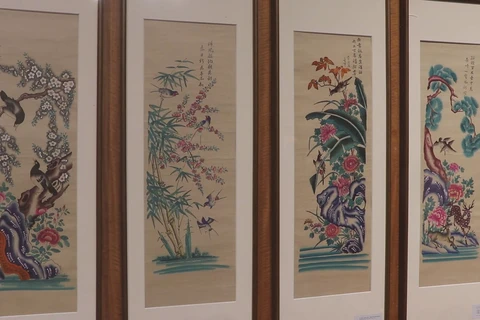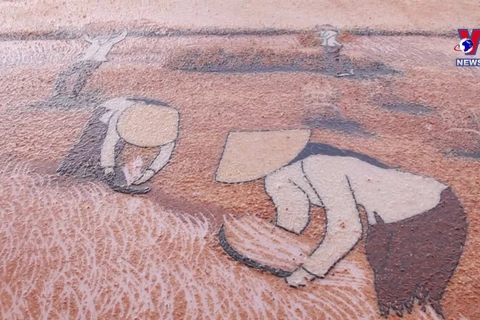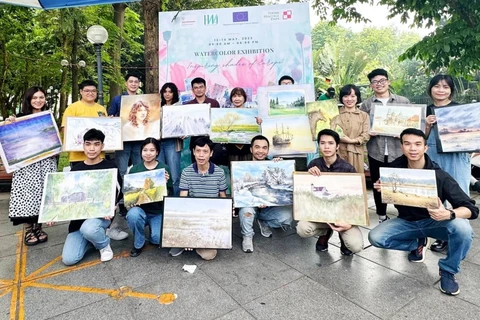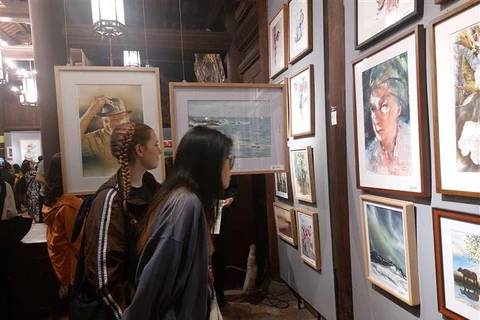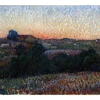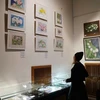
(Photo: Minh Anh/Vietnam+)
Hanoi (VNA) - Tran Van Can was deeply connected to Vietnamese fine arts, dedicating his life to portraying the country and its people from historical to contemporary times through his artwork. His elegance and deep affection for Vietnamese people and landscapes were evident in his work.
Artist Tran Van Can (1910-1994) was one of the four leading artists of the first generation of Vietnamese modern fine arts alongside Nguyen Gia Tri, To Ngoc Van, and Nguyen Tuong Lan.

“He was greatly attached to the Vietnamese fine arts, dedicating his life to portraying the country and its people from historical to contemporary times through his artwork. His elegance and deep affection for Vietnamese people and landscapes were evident in his work,” art researcher Nguyen Hai Yen commented.
Tran Van Can holds the distinction of having the largest number of paintings preserved at the Vietnam Fine Arts Museum, with a total of 100 works.
Thanks to his creativity, he had been able to create numerous works of art, which depict the diverse reality of the national battle for independence as well as the country's development process.
His highly acclaimed works include Em Thuy (Little Sister Thuy), Goi Dau (Hair Washing), Cuu Nong Dan (Save the Farmers), Tru Giac Doi (Hunger Elimination), Cay Lua (Rice Transplanting), and Nu Dan Quan Mien Bac (Northern Militiawoman).
His best known work is “Em Thuy” (Little Sister Thuy) portraying his eight-year old niece seated on a chair. The painting is probably Vietnam’s most famous portraits and is in the museum’s collection.
Painted in 1943 in oil, the artist depicted Thuy in bright white clothes. She sits on the chair, leaning slightly forward, with her hands closed, suggesting she was a little shy.
Little Sister Thuy is one of the typical portraits of 20th century Vietnam and the work was recognised as national treasure painting in 2013.
Paul Zetter, a British artist and musician, arrived in Vietnam in 1998 to serve as Deputy Director of the British Council. During his time there, he began exploring Vietnamese art and discovered a painting of a little girl with big, bright eyes and delicate, pure lips. He was immediately captivated by the image, which inspired him to compose “Little Thuy’s Minuet” (also known as “Minuet for Em Thuy”) on the piano.
“These are special feelings,” Paul said, noting that this moment was likely the beginning of his love for Vietnam. Later, he met an overseas Vietnamese gentleman who turned out to be Thuy’s son. In 2002, he finally met the woman in the picture. At that time, Ms. Thuy was 67 years old and had grandchildren.
“When I arrived in Vietnam, I composed the minuet and then I was lucky enough to meet Thuy’s son and then Thuy herself.”
Paul settled in Vietnam, so he often visited Ms. Thuy’s family on the occasion of traditional Lunar New Year (Tet). He became her family’s close friend.

The Vietnam Fine Arts Museum on August 8 launched a book about Tran Van Can and his works to mark his 30th death anniversary (1994-2024).
The 213-page book provides readers with writings, images and information about Can’s paintings that are part of the museum’s collection.
It is expected that the book will help readers learn more about Can – one of the greatest painters of modern Vietnamese fine arts.
The book is not only a valuable reference for researchers and art students, but also a meaningful spiritual gift for those who love Vietnamese painting./.
